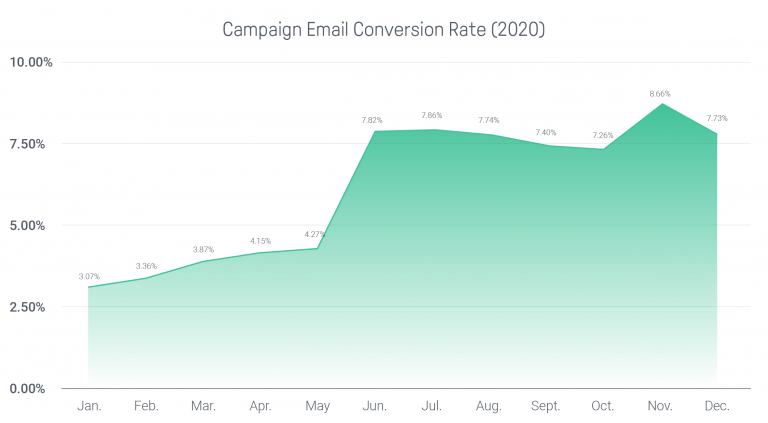Ecommerce brands today utilize every marketing channel at their disposal, from paid search and social to email marketing and direct mail. More often than not, these channels work in conjunction with one another, with data points from one activity informing the next.
Take the online store, for example, who utilizes Facebook ads to help increase awareness and sales. The targeting capabilities Facebook provides are built on a multitude of data points, including users’ phone activity. The more targeted the ads can be, the higher the ROAS. But what happens when that data goes away? For the store, it may mean less targeted campaigns and increased ad spend just to maintain the status quo.
This reality is now playing out in front of our eyes. Much to Facebook’s dismay, Apple’s planned privacy update to iOS 14 will prompt users to choose whether to allow Facebook to track their phone activity to provide personalized ads. This has left Facebook and Apple bickering like two siblings fighting over who rides in the front seat.
Social and search channels, despite their success, give companies very little control over who sees their content and when—if they do at all. For ecommerce businesses, the reality is this: the ability to selectively and cost-effectively market to their target customers is no longer in their control.
Think about that for a minute.
Facebook v. Apple’s impact on email marketing
If Lindsay from New York is scrolling her Facebook feed, she will be presented with ads from companies trying to sell her the next best product—but she didn’t ask for them. Sure, it may catch her attention, but consumers like Lindsay are trained to spot an ad and keep scrolling.
The saving grace for ecommerce businesses is that they were able to personalize those ads to the Lindsays of the world. But having that personalization stripped away from the brand will decrease the ads’ effectiveness—and Facebook agrees. In testing, they have seen publishers experience more than a 50% drop in revenue when personalization was removed from mobile app ad install campaigns.
Email, on the other hand, is the complete opposite—it’s an opt-in channel. Consumers who receive marketing emails from companies specifically ask for them. They took the time to enter their email address and confirm their interest. Because of this intent, when they engage with an email, they are already in a “shopping” mindset.
Email marketing has gone from an energetic up-and-comer to being pronounced dead, only to rise like a phoenix from the flames. The truth is, even as new marketing channels popped up, email never went away as the old, lazy narratives claimed.
In fact, in 2020, email marketing had its best year yet. Conversion rates for promotional campaigns ended the year at 6.5% , an increase of 111% year-over-year, while automated messages ended at 30%, a 95% lift. Maybe even more important, as consumers increasingly turned their attention to online shopping during the pandemic, email’s performance only continued to improve, showcasing the potential of opt-in channels.

Part of the longevity of email marketing is due to the subscriber’s ability to opt out. If an email subscriber decides they no longer prefer receiving emails, they can click that “unsubscribe” button. And while companies once feared this action, they have grown to appreciate it because they know they are not spending money on targeting a customer who doesn’t want to hear from them—at least via that channel. Ultimately, this helps improve both the cost and performance of the channel.
With channels like paid search, you are competing with other companies—and you pay for that luxury. This is not the case with email. Whether it is one or one hundred companies you compete with, the cost to send an email remains the same—plus, the data you have on the consumer can’t be taken away by a third party.
Don’t ignore the growth of other opt-in channels
Email may be just the tip of the iceberg. Other opt-in marketing channels, notably SMS and web push notifications, are joining email marketing at the table, as both channels saw a massive year-over-year increase in sends in 2020.
Not only did the number of SMS messages sent increase nearly 400% last year, but conversion rates increased by more than 100%. With SMS now a ubiquitous communication channel, brands and consumers are finding value in it—especially during peak shopping periods. Black Friday and Cyber Monday combined this past holiday season to send more SMS messages than the entire month of November 2019, while Black Friday accounted for 19% of all November SMS orders.
SMS is showing no signs of slowing. For brands, having a quickly-seen and wanted marketing tool delivered to a device that is rarely out of arm’s reach can be a primary method of growth.
Own or rent?
The rift between Facebook and Apple may just be a sign of things to come. Google recently announced they would stop selling ads based on individuals’ browsing across multiple websites. The consequences of these decisions for brands are real. Sure, they can continue to compete with other brands and rely on someone else to own their customer relationship, but they need to prepare for all the baggage that comes with it.
Focusing on growing opt-in channels that can work with one another and sync to paid search and social platforms should be on top of brands’ minds in 2021. The need to own the customer relationship and communicate with them in the manner of their choosing cannot be understated.
After all, who wouldn’t want to opt out of something they never opted into in the first place?